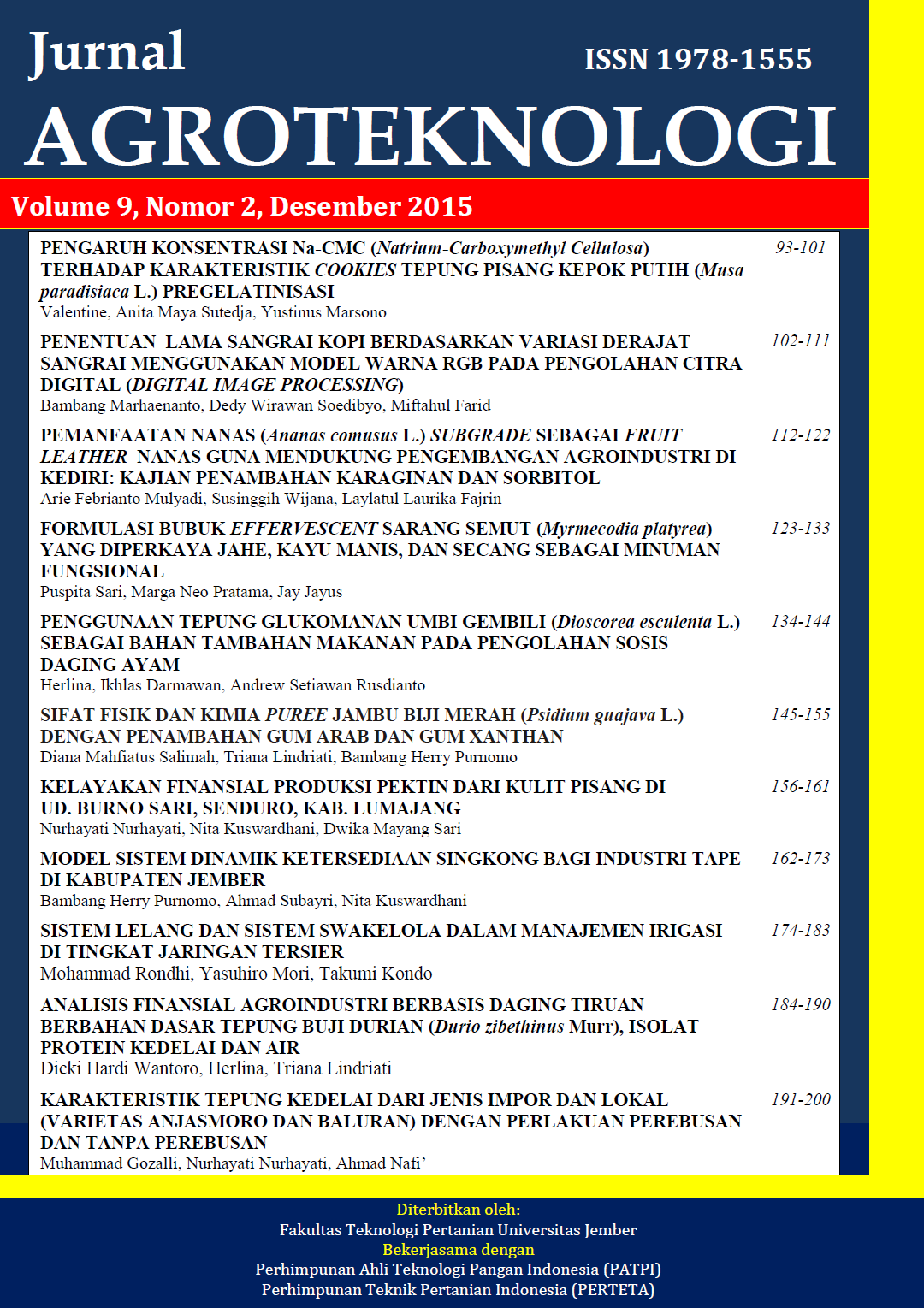SISTEM LELANG DAN SISTEM SWAKELOLA DALAM MANAJEMEN IRIGASI DI TINGKAT JARINGAN TERSIER (Studi Kasus di Sistem Irigasi Desa Kalirejo, Kudus, Jawa Tengah)
Abstract
Irrigation is one of impartant factors in increasing land productivity. In Java government has established irrigation dam to boost food production especially paddy in the period 1950-1980. After that period, governments found its difficulty to fund the recurring costs of irrigation. The government policy has changed from establishing new reservoir to managing water irrigation. In Central Java, irrigatioan water management has changed by the time, especially in tertiary canal. It was manged by ulu-ulu before 1976, then changed to dharma tirta by swakelola system. In 1990s government has been united the water management in tertiary canal by legalizing water organization through generating water usage association (Persatuan Petani Pemakai Air – P3A). Started from 2005 some farmer tried to apply another system that is called lelang system. However explanation of these syetems is still not clear. Therefore, the objectives of this research are (1) to define the lelang system and swakelola system in water management, (2) to distinguish advantages and disadvantages of the two systems. Research was counducted in Kalirejo Village, Kudus District, Central Java Province. In the village some P3As has been applying swakelola system and another P3A has applying lelang system. Decriptive and comparative analysis with institutional approach was apllied to respond objectives of this research. The results show that lelang system is irrigation water management that the board member is selected by auction, where the highest biddest becomes chairman of P3A. The auction is conduted in general meeting, where initial bdding is decided by agreement between farmer and P3A candidate that facilitated by village. The money is allocated to establish agriculture infrastructure such as road agriculture, agriculture bridge, drainage infrastructure and so on. Water fee by farmer is also decided in the meeting. In the swakelola system selection of board member (including chairman of P3A) is decided by discussion. Then, payment in advance is not required, in deed the agriculture infrastructure would be provided by after receiving water fee from farmer. The advantages of lelang system is availability of money in advance that is important to provide agriculture infrastructure, whereas the disadvantages of the lelang system is its potential in poor water management (especially in maintaining tertiary canal and other additional task). This is due to possibility of board member of P3A who are not farmer which low experience and knowledge to manage water irrigation on that field. The advantage of swakelola system is board member comes from farmer who has good knowledge and understand in field condition, while the disadvantage of swakelola system is low possibility in providing agriculture infrastructure, especially in poor finance management.
Keywords: water management, institutional appoarch, swakelola system, lelang system
Downloads
Downloads
Published
Issue
Section
License
Jurnal Agroteknologi has CC-BY-SA or an equivalent license as the optimal license for the publication, distribution, use, and reuse of scholarly work. Authors who publish with this journal retain copyright and grant the journal the right of first publication with the work simultaneously licensed under a Creative Commons Attribution-ShareAlike 4.0 International License that allows others to share the work with an acknowledgment of the work's authorship and initial publication in this journal.
 JURNAL AGROTEKNOLOGI
JURNAL AGROTEKNOLOGI 








.png)
